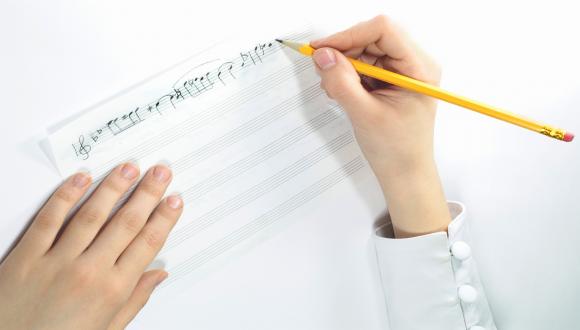Theory Exams
THEORETICAL EXAMINATIONS for Undergraduate Applicants
For theory sample questions click here
- Applicants who submit a video recording are required to take theory exam aproximately a week before the beginning of the academic year.
- Theoretical exams will include a written theory test and an oral ear-proficiency exam.
The examinations require reading, singing and writing in treble and bass clef.
The examinations require skilled and fluent responses
1. Written examination in Ear Training (Solfege)
The following should be identified and written in the treble and bass clef:
1) Melodic and harmonic intervals
2) Triads and their inversions
3) Seventh-chords and their inversions:
-
major-major seventh-chord
-
minor-minor seventh-chord
-
major-minor seventh-chord (dominant 7th)
-
diminished-minor seventh-chord
-
minor-major seventh chord
-
augmented-major seventh chord
-
diminished-diminished seventh-chord
4) Identification of time signatures
5) One-part dictation
6) Rhythmic dictation
7) Two-part dictation
8) Harmonic dictation (including triads, seventh-chords, and their inversions)
2) Oral Examination in Ear Training
1) Sight-singing of a given piece with modulations
2) Audial memory (the ability to memorize and sing the following):
a) Short rhythmic phrases
b) Short melodic phrases
c) Intervals
d) Triads and their inversions
e) Seventh-chords and their inversions
f) The singing of scales and modes in solfege
3) Written Examination in Theory
1) Scales – construction and identification of scales, both major and minor (harmonic, melodic and natural)
2) Modes – construction and identification of modes (Dorian, Phrygian, Lydian, Mixolydian, and Locrian)
3) Intervals – construction and identification of intervals on any given note
4) Triads and their inversions – construction and identification of triads and their inversions (major, minor, diminished, and augmented)
5) Seventh-chords and their inversions – construction and identification of seventh-chords and their inversions:
- major-minor seventh-chord
- minor-minor seventh-chord
- major-minor seventh-chord (dominant 7th)
- diminished-minor seventh-chord
- minor-major seventh chord
- augmented-major seventh chord
- diminished-diminished seventh-chord
6) Transposition
7) Written continuation of a given melody
8) Command of rhythmic values
9) Harmonization of a given soprano and bass using all chords and triads on every degree
10) Writing a simple harmonic progression according to a given sequence of degrees
11) Analyzing a short piece according to guiding questions
12) Defining/explaining a selection of basic musical terminology
Basic musical terminology
In preparation for your music studies, you will be expected to have a good command of some basic musical terms constantly in use in the various courses offered by The Buchmann-Mehta School of Music. A part of the written entrance examination in music theory will test your knowledge of the terms and notions in question. In this part of the examination, you will be requested to define/describe a selection of terms from a given list. Shortly, a complete list of the material you need to know will be uploaded to this website. Please feel free to download this list and use it for your preparation.
The music terminology you will be expected to know is divided into five categories:
1. Definition of basic terms in music theory, such as: rhythm, harmony, various scales/modes etc.
2. Common symbols and signs used in music notation, such as: various clefs, fermata, repeat sign etc.
3. A selection of performance instructions, tempo and dynamic expressions, articulations and ornaments, such as: legato, crescendo, allegro, trill etc.
4. Standard music instruments and formations: various types of orchestras and choirs and the instruments/voices they consist of.
5. Common musical forms, such as: symphoney ,opera etc.
All required explanations and definitions may be found on the Oxford Music Online website at the following Internet address:http://www.oxfordmusiconline.com . this website is accessible through all computer terminals on the Tel-Aviv University campus. please access the complete list of terms for the entrance examination through this link. All aspets of the written examination in Solfage and Theory require a command of reading, singing and writing in both the treble and bass clef.
4) keyboard proficiency (Please note - required only for accepted students; this exam is done at the end of the first or second years of studies.)
All candidates, whose major instrument is not the piano, must prepare three works from the following repertoire (or works of similar difficulty):
1) Bach – Inventions for two voices or symphonies (three voices)
2) An easy sonata (first movement or second and third movement) by Haydn, Mozart or Beethoven.
3) A Romantic work (19th century), or a work from the 20th century (example: Mendelssohn – Song without Words, Schumann – op. 68, Tchaikovsky – op. 39, Kabalevsky – op. 27, Bartok – Microcosm III, II, Debussy – Preludes, Scriabin – Preludes)


